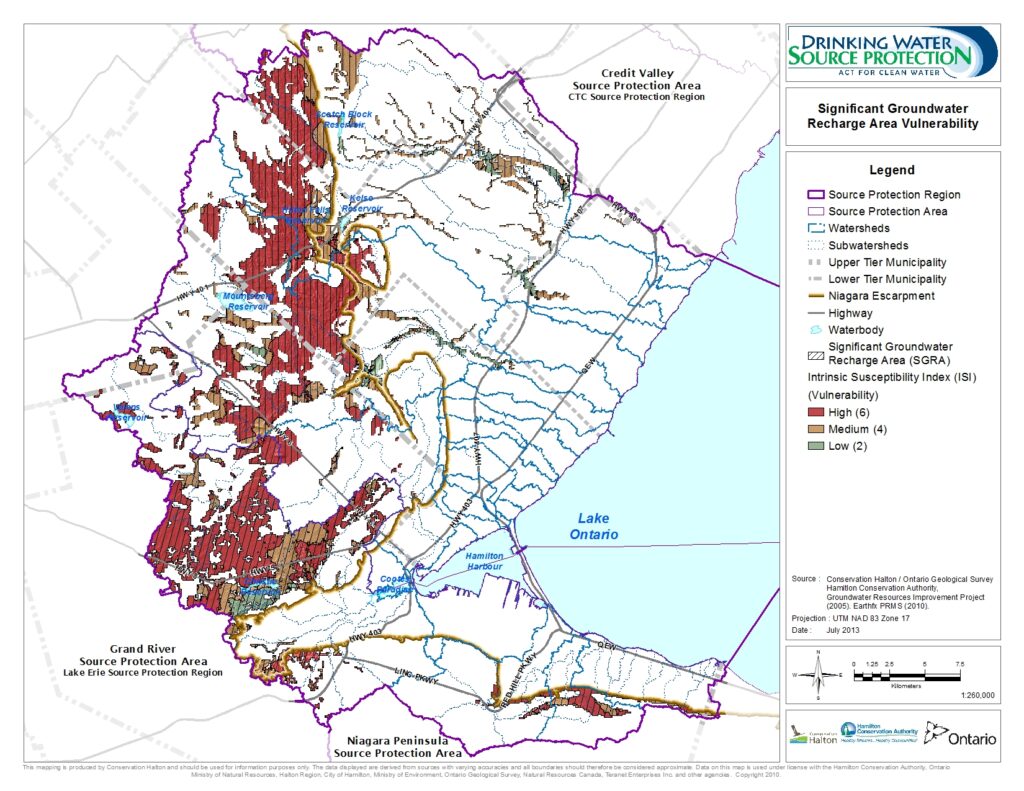Significant Groundwater Recharge Areas
Recharge areas are locations on the ground surface that have appropriate characteristics to facilitate the infiltration of precipitation and surface water run-off below ground surface to the water table. A recharge area is significant when the rate of recharge, relative to the source protection area as a whole, is fifteen percent higher than average.
Soil properties, topography, land cover, and precipitation were used as some of the input data to a model to calculate the recharge distribution across the source protection region.
Recharge areas were deemed to be significant when the annual recharge rate in the area was greater than the average plus fifteen percent or more across its assessment area.
Due to geology, recharge within the Halton Region and Hamilton Region Source Protection Area varies significantly, above and below the Niagara Escarpment and along the lakeshore.

Typically, the till and shale units below the escarpment limit infiltration. This causes a higher percentage of precipitation received to leave the watershed as runoff. Above the escarpment, the sandier soils and fractured dolostone increase the likelihood that recharge will occur. Accordingly, the two source protection areas were each divided into three areas for evaluation: above and below the escarpment and the urban area.
The recharge water can include dissolved chemicals that the runoff has accumulated. Therefore, these areas have been mapped to provide a better understanding of the need for protection of the quantity and quality of groundwater available for all users.




